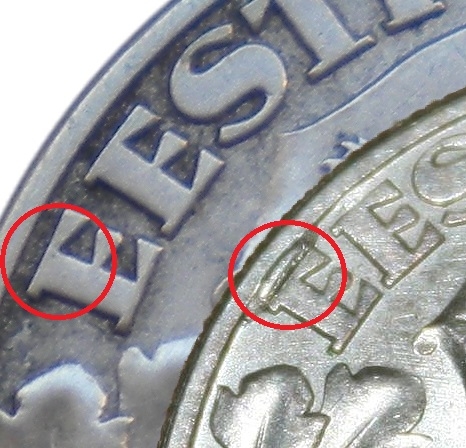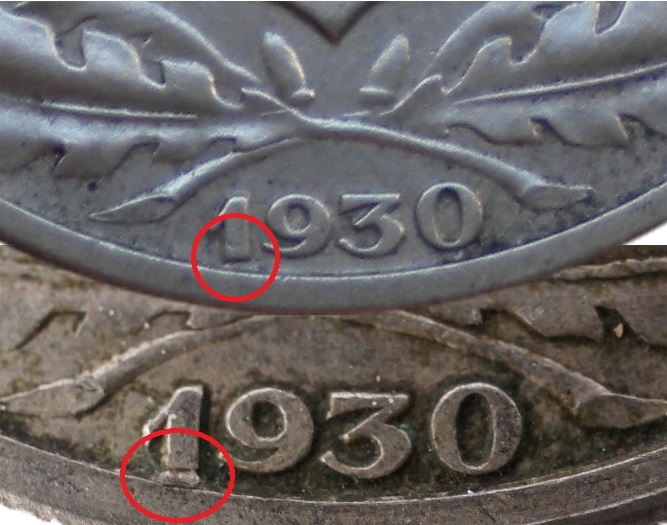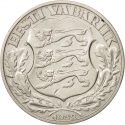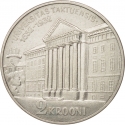You are about to finish your registration. Please check your mailbox (including spam folder). There should be a letter with a confirmation link. Check setting to make sure that your e-mail address is correct.
Send letter againDescription
There are three different varieties of the coin. The normal coin, the Tall '1' coin and the Tall 'E' coin.
— In the Tall '1' coin, the bottom of the '1' in '1930' has melted or merged with the rim.
— In the Tall 'E' variety, the top of the first 'E' in 'EESTI' has melted or merged with the rim.
Obverse

|
Depicts the coat of arms of Estonia (1925–1940), the country name (Republic of Estonia) above, the date below. EESTI VABARIIK |
|---|---|
Reverse

|
Depicts Toompea Castle, the denomination below. 2 KROONI |
| Edge |
180 reeds |







